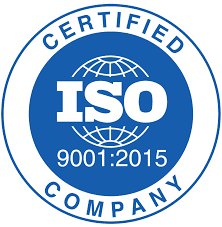Scissor Lift Certification: Ensuring Safety and Compliance in Every Country
Scissor lifts are used in various industries worldwide, and obtaining the proper certification is critical to ensure safety and compliance with local regulations. Different countries have their certification requirements and standards for scissor lifts. Let’s explore some of the notable certifications, the countries they correspond to, and the process of obtaining them.
CE Certification (EU):
Scissor lifts sold within the European Union (EU) market require CE (Conformité Européene) certification.
Manufacturers must assess the risks associated with their scissor lifts to obtain CE certification, perform conformity assessment, and meet the requirements outlined in the relevant EU directives.
This certification demonstrates compliance with EU-wide health, safety, and environmental protection standards.
ANSI/SIA A92 Standard (USA):
The American National Standards Institute (ANSI) and the Scaffolding and Aerial Work Industry Association (SIA) have developed a series of standards for scissor lifts (A92.20, A92.22, A92.24).
These standards are widely recognized in the United States and ensure the safe design, construction, and use of scissor lifts.
Manufacturers must adhere to these standards and undergo rigorous testing to obtain ANSI/SIA A92 certification.
ISO 9001 (International):
ISO 9001 certification is not specific to scissor lifts but is a globally recognized quality management system.
Manufacturers seeking ISO 9001 certification must implement sound quality management practices focusing on continuous improvement and customer satisfaction.
Compliance with ISO 9001 requirements is assessed through an audit conducted by an accredited certification body.
OSHA Compliance (USA):
Although not a certification, compliance with Occupational Safety and Health Administration (OSHA) regulations is critical for scissor lifts used in the United States.
OSHA provides scissor lift safety guidelines, including training requirements, inspection protocols, and operating instructions.
Manufacturers must design and build scissor lifts to OSHA standards to support user compliance.
CSA B354 Standard (Canada):
In Canada, scissor lifts must comply with the safety standards developed by the Canadian Standards Association (CSA) under the CSA B354 series.
These standards outline the requirements for the design, construction, and use of scissor lifts.
Manufacturers must comply with CSA B354 standards and pass testing and evaluation to receive certification.
To obtain these certifications, manufacturers must ensure that their scissor lifts are designed, manufactured, and tested in compliance with the respective standards and regulations. This process typically involves conducting safety assessments, performing product testing, and meeting documentation requirements. Certification bodies or notified bodies conduct audits, inspections, and tests to verify compliance. Once all requirements are met, the manufacturer receives the appropriate certification.
Obtaining scissor lift certification is critical to ensuring compliance with local regulations, improving safety, and promoting industry best practices. These certifications demonstrate the manufacturer’s commitment to quality, safety, and keeping, thereby increasing the confidence of customers and end users. By meeting the requirements of the various certifications, scissor lift manufacturers prioritize operator welfare and help improve their equipment’s overall efficiency and reliability.
Post time: May-12-2023


